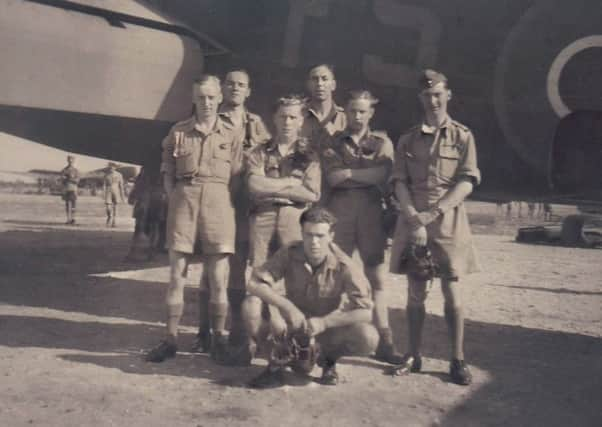WWII Edinburgh RAF hero finally laid to rest


Spies from the Special Operations Executive (SOE) hidden deep behind enemy lines were helping the local resistance harry and hinder the Nazis in Albania.
Supported by covert drops of weapons and other supplies, the highly confidential RAF missions were shrouded in secrecy. But now after 75 years an Edinburgh flight sergeant who took part in the operations has been finally laid to rest after his bomber came down over Albania when the aircraft clipped a mountain ridge and crashed on Oct 29, 1944.
Advertisement
Hide AdAdvertisement
Hide AdFlight Sergeant Ernest Logan Brown was one of seven crew member of the 148 (Special Duties) Squadron who were onboard the RAF Halifax JP244 aircraft before they were killed in the crash.
A burial service to honour the former Edinburgh police constable was held at the Commonwealth War Graves Commission (CWGC) in Tirana Park Memorial Cemetery, Albania and was attended by Her Majesty’s Ambassador, His excellency Mr Duncan Norman MBE, family members and local dignitaries.
Tracey Bowers of the MOD’s Joint Casualty and Compassionate Centre (JCCC), who organised the service, said: “It has been a privilege to organise this service and to reflect on the bravery of these seven young men.
“All were killed carrying out a mission supporting members of the Special Operations Executive, the crew were from different backgrounds but flew together as a professional tight knit team with one common aim.
Advertisement
Hide AdAdvertisement
Hide Ad“Today we respect their commitment to duty and join with their families in honouring their sacrifice.”
The service was conducted by the Reverend Flight Lieutenant Jonathan Stewart Station Chaplain RAFC Cranwell and supported by members of The Queen’s Colour Squadron RAF.
On the fateful morning of October 29, the bomber launched from Brindisi in Italy to carry out a supply dropping mission, code named “Operation Tinker”, to the Special Operations Executive in Albania. But communication with the aircraft was severed.
The Special Operations Record Book noted: “Nothing further was heard from this aircraft and must be presumed lost. It was seen to drop its load on the target.”
Advertisement
Hide AdAdvertisement
Hide AdWreckage positively identified as being from a Halifax was found recently following wild fires in Albania and research concluded it was the Halifax JP 244.
The Reverend Jonathan Stewart said: “It is a real privilege for me to be involved, laying to rest members of this RAF crew who undertook such an important mission to help bring us the freedom that we all enjoy today. Even though many years have passed, this is a poignant moment for all concerned.”
Commonwealth War Graves Commission’s Eleni Kakkava, said: “We are deeply moved to be able to lay members of the Crew of Halifax JP244 to rest and mark their grave with a CWGC headstone. We remember their sacrifice and that of all those who served and will care for their graves and their memory with dedication, forever.”